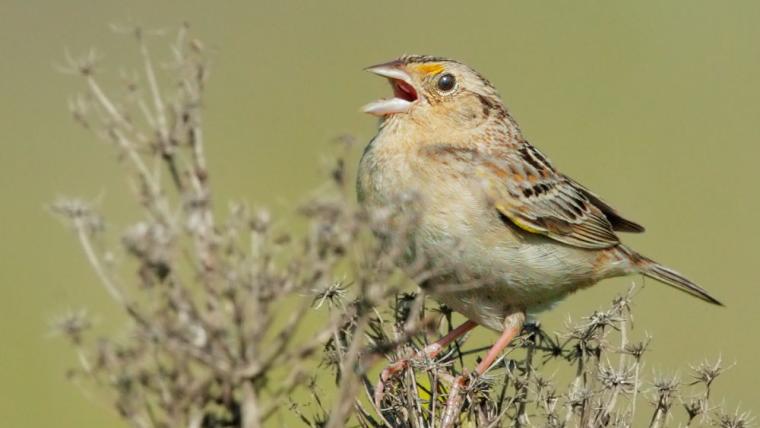
In a nutshell
In North America, 80% of grasslands have been lost to make way for agriculture, energy development, and other uses. In the grasslands that remain, many of the natural disturbances that have historically limited the encroachment of woody plants such as fire, use by bison and prairie dogs, and other disturbances no longer take place. Managers instead use practices such as mowing, tilling, and burning to minimize woody encroachment that can adversely impact grassland nesting birds. It is difficult for managers to plan activities to avoid nesting timing, as estimates of nesting timing are only available at the broad scale of a bird species’ entire range.
The authors of this study used information on nest survival from scientific literature to develop a model that predicts the expected nest departure timing for 36 species of grassland birds. They included vegetation phenology and climate information in their models, including the USA-NPN’s Spring Bloom Index, which performed well at estimating fledge dates. The authors found a high amount of variation in the timing of nesting across the study area in the central U.S. In years with extremely dry conditions, fledge dates were eight days earlier, while in extreme wet years, fledge dates were 13 days earlier than in average years. Species nesting in taller vegetation had later nesting than those in shorter vegetation.
What is special about this study?
Information about nesting timing is lacking for grassland birds in the central part of the U.S. The localized information produced by this study is much more useful to managers who need to make decisions about when to mow, burn, or take other management actions for the lands they manage.
What does this mean for YOU?
Grasslands are among the most impacted ecosystems in the world due to conversion to agriculture, energy and other human development, invasive plants, and encroachment of woody vegetation. The birds that rely on these remaining areas have experienced the greatest declines in comparison to other bird groups. The information from this study can help managers to avoid adverse impacts to grassland bird nesting, sustaining future generations of these species.
Citation: Anteau, M.J., K.S. Ellis, G.J. MacDonald, L.D. Igl, N.D. Niemuth, J.L. Vest. 2023. Climate-induced shifts in grassland bird nesting phenology have implications for grassland management. Global Ecology and Conservation. doi.org/10.1016/j.gecco.2023.e02700.